Perthane
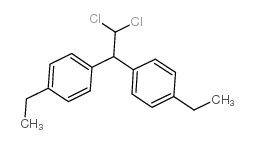
Perthane structure
|
Common Name | Perthane | ||
|---|---|---|---|---|
| CAS Number | 72-56-0 | Molecular Weight | 307.25700 | |
| Density | 1.117 g/cm3 | Boiling Point | 407.2ºC at 760 mmHg | |
| Molecular Formula | C18H20Cl2 | Melting Point | 56-57℃ (methanol ) | |
| MSDS | Chinese USA | Flash Point | 212.1ºC | |
| Symbol |

GHS09 |
Signal Word | Warning | |
Use of PerthanePerthane is the diethyl derivative of common pesticide DDD. It may prevent the formation of spontaneous mammary carcinoma, and also may causes adrenocortical atrophy in humans. |
| Name | ethyl-DDD |
|---|---|
| Synonym | More Synonyms |
| Density | 1.117 g/cm3 |
|---|---|
| Boiling Point | 407.2ºC at 760 mmHg |
| Melting Point | 56-57℃ (methanol ) |
| Molecular Formula | C18H20Cl2 |
| Molecular Weight | 307.25700 |
| Flash Point | 212.1ºC |
| Exact Mass | 306.09400 |
| LogP | 5.74700 |
| Index of Refraction | 1.56 |
CHEMICAL IDENTIFICATION
HEALTH HAZARD DATAACUTE TOXICITY DATA
MUTATION DATA
|
| Symbol |

GHS09 |
|---|---|
| Signal Word | Warning |
| Hazard Statements | H410 |
| Precautionary Statements | P273-P501 |
| Personal Protective Equipment | Eyeshields;Gloves |
| Hazard Codes | N: Dangerous for the environment; |
| Risk Phrases | 50/53 |
| Safety Phrases | S60-S61 |
| RIDADR | UN 2761 |
| RTECS | KH5790000 |
| Packaging Group | III |
| Hazard Class | 6.1(b) |
| HS Code | 2903999090 |
|
~% 
Perthane CAS#:72-56-0 |
| Literature: Journal of the American Chemical Society, , vol. 58, p. 2310 |
|
~% 
Perthane CAS#:72-56-0 |
| Literature: Zhurnal Organicheskoi Khimii, , vol. 12, # 9 p. 1973 - 1979,1926 - 1931 |
|
~% 
Perthane CAS#:72-56-0 |
| Literature: Zhurnal Organicheskoi Khimii, , vol. 12, # 9 p. 1973 - 1979,1926 - 1931 |
|
~% 
Perthane CAS#:72-56-0 |
| Literature: Zhurnal Organicheskoi Khimii, , vol. 12, # 9 p. 1973 - 1979,1926 - 1931 |
| HS Code | 2903999090 |
|---|---|
| Summary | 2903999090 halogenated derivatives of aromatic hydrocarbons VAT:17.0% Tax rebate rate:9.0% Supervision conditions:none MFN tariff:5.5% General tariff:30.0% |
|
Development of QSAR models for predicting hepatocarcinogenic toxicity of chemicals.
Eur. J. Med. Chem. 44 , 3658-64, (2009) A dataset comprising 55 chemicals with hepatocarcinogenic potency indices was collected from the Carcinogenic Potency Database with the aim of developing QSAR models enabling prediction of the above u... |
|
|
Potential compounds for monitoring method performance in the determination of selected organochlorine pesticides and polychlorinated biphenyls in human serum.
J. Anal. Toxicol. 14(3) , 143-5, (1990) Four compounds--2,2', 3,4'-tetrachlorobiphenyl, decachlorodiphenylether, 1,1-dichloro-2,2-bis(p-ethylphenyl)ethane, and dichlorobenzophenone--are recommended for monitoring the within-sample behavior ... |
|
|
Rapid decline of persistent organochlorine pollutants in serum among young Swedish males.
Chemosphere 70(9) , 1620-8, (2008) To investigate a possible time trend in serum concentrations of persistent organochlorine pollutants (POPs), representative samples of the young (median age 18 years) Swedish male population were inve... |
| MFCD00045254 |
| 1,1-bis-(4-ethyl-phenyl)-2,2-dichloro-ethane |
| 1,1’-(2,2-dichloroethane-1,1-diyl)bis(4-ethylbenzene) |
| Ethylan |
| EINECS 200-785-1 |
| Caswell No. 337 |
| 1,1-di-(p-ethylphenyl)-2,2-dichloroethane |
| p,p'-Ethyl DDD |
| 1,1-dichloro-2,2-bis(p-ethylphenyl)-ethane |
| 1,1’-(2,2-dichloroethylidene)bis[4-ethylbenzene] |
| Perthan |
| 1-[2,2-dichloro-1-(4-ethylphenyl)ethyl]-4-ethylbenzene |
| Di(p-ethylphenyl)dichloroethane |
| Ethane,1,1-dichloro-2,2-bis(p-ethylphenyl) |
| 1,1-dichloro-2,2-bis(4-ethylphenyl)ethane |
| PERTHANE |
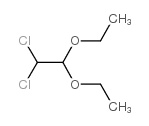
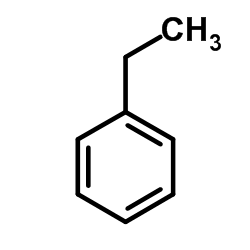
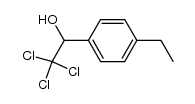
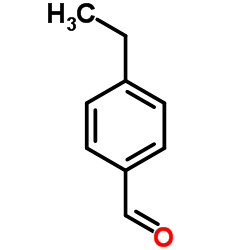

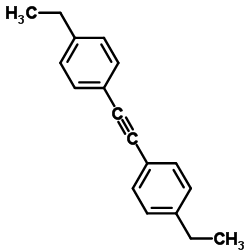 CAS#:79135-69-6
CAS#:79135-69-6